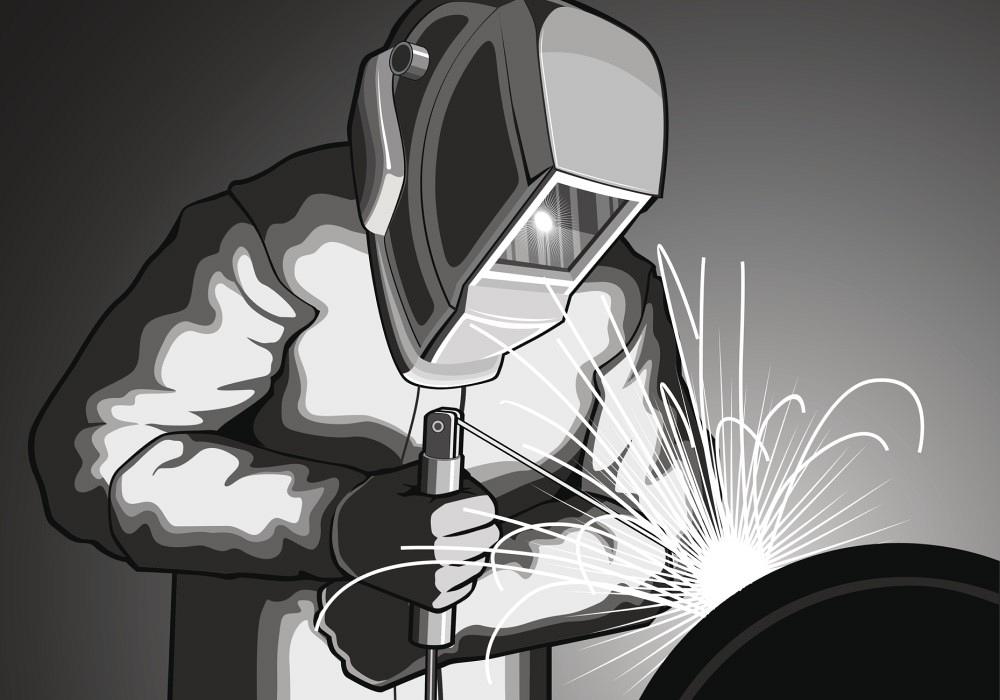Getting Welding Excellence: Introducing the Secrets of WPS Application and Optimization
In the world of welding, achieving quality is a quest that pivots on the careful implementation and optimization of Welding Treatment Specifications (WPS) By delving into the vital components, techniques, obstacles, and best techniques connected with WPS, a globe of welding excellence waits for those that are willing to explore its midsts.
Value of WPS in Welding
The Importance of Welding Procedure Specs (WPS) in the welding market can not be overemphasized, working as the foundation for guaranteeing consistency, quality, and safety and security in welding operations. A WPS gives thorough directions on just how welding is to be executed, consisting of vital variables such as materials, welding procedures, joint style, filler metals, interpass and preheat temperatures, welding currents, voltages, traveling speeds, and a lot more. By sticking to a well-defined WPS, welders can preserve harmony in their job, resulting in constant weld high quality across various projects.

Crucial Element of WPS
Reviewing the essential components of a welding procedure specification (WPS) is essential for comprehending its function in welding operations. An extensive WPS consists of a number of crucial elements that direct welders in attaining top quality and uniformity in their work. One vital aspect of a WPS is the welding procedure specification, which details the specific welding processes to be used, such as gas tungsten arc welding (GTAW) or protected steel arc welding (SMAW) Furthermore, the WPS includes information on the welding products, such as the kind and specifications of the base steel and filler metal to be made use of. The WPS also defines important variables like welding specifications, preheat and interpass temperature demands, and post-weld warmth therapy procedures. In addition, it consists of details on joint layout, fit-up, and any kind of unique strategies or safety measures required for the welding procedure. By integrating these crucial elements into the WPS, welding treatments can be standard, making certain high quality, performance, and safety and security in welding operations.
Strategies for WPS Optimization

Second of all, training and qualification of welding employees according to the particular demands of the WPS is critical. Supplying comprehensive training programs and ensuring that welders are certified to carry out treatments laid out in the WPS can cause better welds and lowered rework.
Furthermore, leveraging modern technology such as welding software program and tracking systems can aid in enhancing WPS. These tools can aid in tracking variables, making sure criteria are within defined limitations, and giving real-time comments to welders, allowing them to make prompt changes for boosted weld quality.
Typical Difficulties and Solutions
Dealing with challenges in executing the approaches for WPS optimization can prevent welding procedures' effectiveness see post and top quality. One common obstacle is insufficient training or understanding of the welding treatment specifications (WPS) among the welding group. This can bring about improper implementation of welds, leading to problems and rework. To address this, thorough training programs should be carried out to guarantee that all welders are skillful in using and analyzing WPS properly.
One more obstacle is the lack of correct documents and record-keeping, which is crucial for WPS optimization. Without clear records of welding specifications, products made use of, and assessment outcomes, it becomes tough to determine locations for enhancement and make certain consistency in welding processes. Implementing a durable documentation system, such as electronic welding management software program, can help streamline record-keeping and promote data official website analysis for constant improvement.
In addition, irregular welding tools calibration and maintenance can pose a substantial challenge to WPS optimization. Normal tools checks, calibration, and upkeep schedules must be complied with strictly to ensure that welding parameters are properly managed and preserved within the specified resistances (welding WPS). By attending to these usual challenges with positive solutions, welding procedures can improve efficiency, quality, and general welding excellence
Ideal Practices for WPS Implementation
To guarantee successful WPS implementation in welding operations, adherence to market standards and meticulous focus to information are paramount. When starting WPS implementation, it is vital to begin by thoroughly recognizing the certain welding requirements of the task. This involves an extensive testimonial of the welding procedure specs, products to be bonded, and the ecological conditions in which the welding will certainly take location.
As soon as the demands are clear, the following step is to choose the ideal welding procedure that straightens with these specs. This involves consulting the appropriate codes and criteria, such as those given by the American Welding Culture (AWS) or the International Organization for Standardization (ISO), to guarantee compliance and high quality.
Additionally, documenting the whole WPS application procedure is crucial for traceability and quality control. Detailed records need to be maintained regarding welding parameters, product prep work, preheat and interpass temperatures, welding consumables utilized, and any kind of variances from the original treatment. Routine audits and testimonials of the WPS can help recognize areas for enhancement and guarantee ongoing optimization of the welding procedure.


Final Thought
In verdict, the implementation and optimization of Welding Procedure Specs (WPS) is essential for accomplishing welding excellence. By recognizing the crucial elements of WPS, carrying out effective strategies for optimization, attending to usual challenges, and following ideal practices, welders can ensure high-quality welds and secure working problems. It is necessary for experts in the welding industry to focus on the correct implementation of WPS to improve general welding performance and attain desired results.
The Significance of Welding Procedure Specifications (WPS) in the welding sector can not be overemphasized, serving as the foundation for ensuring consistency, quality, and safety in welding procedures. A WPS provides comprehensive directions on how welding is to be brought out, including necessary variables such as products, welding processes, joint layout, filler steels, preheat and interpass temperature levels, welding currents, voltages, traveling rates, and much more. One essential facet of a WPS is the welding procedure click here now requirements, which details the details welding processes to be used, such as gas tungsten arc welding (GTAW) or protected steel arc welding (SMAW) By incorporating these key components into the WPS, welding procedures can be standard, guaranteeing quality, performance, and safety and security in welding procedures.
It is essential for professionals in the welding industry to prioritize the correct implementation of WPS to enhance general welding efficiency and achieve desired end results.